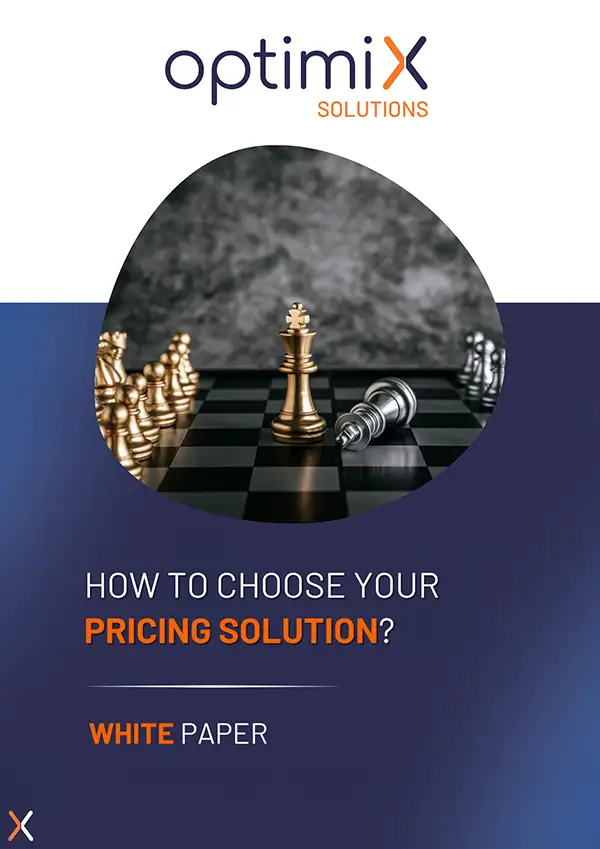In an increasingly dynamic competitive environment, defining an effective pricing strategy is a key factor in ensuring a company’s profitability, competitiveness and marketing alignment.
Whether you’re an SME, a technology start-up or a SaaS company, the question of price positioning is crucial to capturing your market and defending your value. There are four main pricing strategies, each with a different economic, marketing and sales rationale.
What are the five most common pricing strategies?
There are several pricing approaches, each adapted to different objectives and contexts. Some strategies aim to maximize margins by emphasizing quality or exclusivity, while others focus on volume to rapidly gain market share.
We can also choose to align with market prices to avoid price wars, or play on customer perception and perceived value, adjusting the price according to their expectations and sensitivities. Finally, in dynamic environments, prices can be adjusted in real time according to demand, stocks or competitor actions.
The choice of strategy depends above all on the company’s positioning, its commercial and financial objectives, and the specifics of its market. A good pricing strategy remains flexible and scalable to adapt to changes and customer needs.
1. Skimming strategy: enhancing innovation or premium image.
Skimming strategy consists in setting a higher price at the launch of a product or service, then gradually lowering it over time or through more accessible versions. This approach is designed to appeal to a segment of consumers looking for exclusivity, innovation or a significant competitive advantage.
It is often used to maximize profits per unit over the first few sales cycles, particularly when the initial cost is high. In the context of digital marketing or the launch of a new SaaS product, this pricing strategy can be part of a strong differentiation strategy, integrated into an overall pricing policy designed for the long term.
The company must nevertheless ensure that the perceived value justifies the price charged. Prior market research is needed to assess the acceptability of the price and to define a coherent trajectory of price reduction over time, without devaluing the product’s image.
2. The penetration strategy: conquering a large-scale market
In contrast, the penetration strategy aims to set the lowest possible price to accelerate product adoption, particularly in price-sensitive segments or emerging markets. In the e-commerce, B2B or freemium software sectors, this approach often enables potential customers to become loyal quickly.
The aim is to raise brand awareness, increase market share and limit price competition by imposing a strong presence. This strategy can also be used to test the price elasticity of demand, or to optimize network effects.
However, there is a risk of setting prices too low, which are then difficult to raise without disrupting the price structure. A well-honed marketing strategy and progressive marketing actions must accompany price increases as the product gains in perceived value.
3. The alignment strategy: following the market standard
The price alignment strategy is based on the principle ofaligning prices with those of competitors, in order to reassure buyers and avoid price differentiation. It is frequently used in highly competitive sectors, where perceived differences between offers are minimal, and where the market price serves as an implicit reference.
This type of pricing policy enables you to stay in the race while differentiating yourself in other areas, such as product mix, customer service or software ergonomics. In this context, it is essential to monitor competitors’ prices and adjust your product policy in line with market trends.
However, this method limits a company’s ability to justify its price on the basis of value, and requires constant monitoring of pricing practices in the sector. Good coordination between marketing, sales strategy and product teams is therefore essential.
4. Perceived value strategy: charge what the customer is willing to pay
This strategy consists in setting a price based on the value the customer attributes to the solution, rather than on the cost price or competitors’ prices. In specialized SaaS software, particularly those integrating revenue management or yield management functions, this approach enables prices to be differentiated according to usage, earnings or customer structure.
Pricing according to perceived value requires a thorough understanding of the target market, users’ expectations and the benefits the product provides. It then becomes possible to charge high prices in certain highly profitable segments, while maintaining a more affordable offer for other targets.
This approach requires considerable upstream work to determine the price acceptable to each segment, and to structure a coherent pricing structure. Differentiated pricing based on objective criteria (functionalities used, number of users, results obtained) maximizes profitability while respecting the psychological acceptability of the price for each customer.
5.Cost-plus pricing strategy: simple, but not simplistic
Cost-plus pricing is one of the most common and accessible pricing methods, particularly suited to industrial, craft or start-up companies. The principle is clear and straightforward: the selling price is calculated by adding a desired margin to the total cost of production.
In practical terms, this method involves adding up the various costs associated with production. A distinction is made between direct costs, such as raw materials or specific labor, and indirect costs, which include overheads, depreciation, energy and logistics. Once the total cost has been determined, a mark-up is applied, often expressed as a percentage, corresponding to the expected profit margin.
For example, if the total cost of a product is €100 and the company decides to apply a 30% mark-up, the selling price will be set at €130.
This approach offers a number of significant advantages. It is simple to calculate and implement, making it easy to adopt, especially in structures where analytical resources are limited. It also guarantees that costs incurred are covered, thus providing a basis for profitability. Last but not least, it is particularly well suited to environments with little fluctuating competition, enabling prices to be stabilized without constant pressure.
However, this method also has limitations that should not be overlooked. It does not take into account the value perceived by the customer: a price set solely on the basis of costs may appear too high, or on the contrary too low, in relation to market expectations. It can also lead to a disconnect with competitive reality, especially in highly competitive sectors where prices evolve rapidly. Furthermore, this approach does not take into accountprice elasticity, i.e. customer sensitivity to price variations, which can lead to missed optimization opportunities.
To make the most of the cost-plus strategy, it is advisable to complement it with regular competitive intelligence and a detailed analysis of demand. This will enable you to adjust the mark-up rate in line with the market, while maintaining a solid, pragmatic base.
Manage your prices with a reliable pricing solution: XPA -Optimix Pricing Analytics
At Optimix, we have designed the XPA Optimix Pricing Analytics solution to help retailers implement effective pricing strategies. Thanks to our intelligent algorithms, the solution makes it possible to integrate the notion of psychological pricing into pricing analyses, while taking into account the structure of fixed and variable costs.
XPA helps companies determine the optimal price for their chosen strategy: skimming, penetration, alignment or value-based pricing. The tool also simulates the effects of a price cut on margins, or calculates the break-even point to be reached for each scenario.
Thanks to a clear visualization of key indicators (unit margin, demand elasticity, average market price), users can easily set the right price according to the chosen marketing strategy. XPA thus becomes an operational lever for adapting pricing policies to the realities on the ground, while maximizing sales results.
Mastering the different pricing strategies is essential for any company wishing to define its pricing policy in a structured and effective way. Whether you’re looking to penetrate a market, enhance the value of an innovation, align yourself with the competition or offer prices based on perceived value, each approach has its own levers, constraints and opportunities.
In the field of SaaS software, where price is a factor in conversion, retention and perception of quality, choosing the right pricing strategy is more strategic than ever. Solutions such as Optimix XPA now make it possible to manage this complexity, based on data, customer behavior and corporate objectives. Pricing is no longer a simple calculation: it’s a discipline in its own right, at the heart of any sustainable growth strategy.







